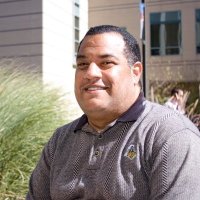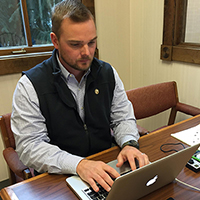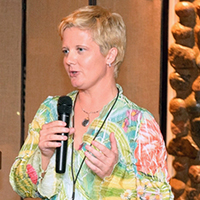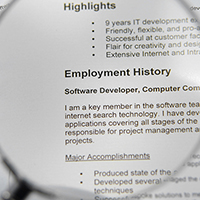Drawn to Learning
Whiteboard animation flips the classroom
Richard Makadok calls it edutainment — part education, part entertainment.
The concept has appeared in elementary education for decades, including Sesame Street and Schoolhouse Rock, but is now making its way into undergraduate and graduate classrooms.
Two Purdue University professors — Makadok, the Brock Family Chair in Strategic Management in the Krannert School of Management, and Timothy Newby from the College of Education — have received funding to develop 16 whiteboard-style animated mini-lectures. The nearly $55,700 grant will help expand the uses for courses in strategic management and to deliver new content and demonstrate how this approach can be effectively integrated in the K-12 teaching environment.
“The idea of using humor, entertainment forms to teach has been well-established in elementary education,” Makadok says. “I’m taking those proven techniques and importing them into the university level.”
The new animations will supplement a set of 19 existing projects Makadok already has developed in collaboration with faculty at Brigham Young University. Makadok says more than 80 percent of students at BYU prefer the animated videos compared with other learning methods.
The animated whiteboard mini-lectures are for the “flipped classroom” pedagogy, in which the lecture and the homework elements of a course are reversed. With a class size of 150, Newby is able to send his short video lectures out before students come to class. Students watch the videos, go through certain exercises and read the course assignments.
“Then when they get to class, I’m allowed now to do things such as present them with cases, present them with practical situations, bring in individuals to offer a separate viewpoint. Things that we never had quite the time to do before because I was lecturing to them all the time,” says Newby, whose research focuses on learning, motivation and the impact of various instructional strategies.
It’s also allowed Newby to become more efficient, cutting a 50-minute lecture to 10 or 12 minutes on video to present students the basic information. “Lots and lots of group work now is happening in the classroom where they’re working together to understand the problem to a greater degree,” he says.
Makadok began featuring the “flipped classroom” concept nearly 15 years ago, describing it as “fairly primitive” because they were basically voice-over PowerPoint presentations. The initial idea was students would do about half of the course in the classroom and half online.
“I looked at how many hours I had with these students in the classroom and I realized it wasn’t much,” Makadok says. “That was a very scarce resource and I wanted to make sure I used that resource most effectively. I decided I didn’t want to waste any of my scarce face-to-face time doing one-way communications. I decided I wanted to reserve the face-to-face class time for two-way interactive activities like case discussions.”
Makadok credits his former doctoral student and teaching assistant, David Kryscynski, who is on the faculty at BYU, with converting the PowerPoint lectures into the animated whiteboard format.
“If you compare the old style PowerPoint lecture to the new animated whiteboard lectures, there’s no comparison. They’re so much more engaging,” he says.
A team of three to four students will be hired and have the opportunity to develop, write scripts, prepare storyboards and produce four or five final videos by learning the new technology, such as Sparkol VideoScribe, and improving their marketable skills and creating a portfolio to help them find jobs after graduation.
The project easily could migrate to other schools in the University and allow Purdue faculty to produce similar animations. This could be done through seminars and workshops, additional training and creating a set of digital training badges in Purdue’s Passport system to certify faculty, IT staff and students.
“I think the whole process is very expandable,” Newby says. “That’s what is so exciting about it within my own classroom is because now I’m able to enhance their learning. They get the same materials they had before; I think it’s a little more efficient for them but it allows them to get into the cases and other things we were never able to do before, so now their experiences are enhanced to a greater degree because the technology allows us to do that.”







